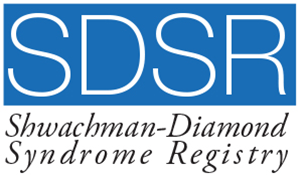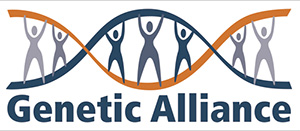Symptoms & Features
Shwachman Diamond Syndrome (SDS) is a rare blood disorder that affects the pancreas, bone marrow, and skeleton, but other organs may also be affected. The following provides more detailed symptoms/features of SDS.
- Digestive – Diarrhea is almost always present in infancy. Stools contain an excessive amount of fat and are foul-smelling and greasy in appearance. Improvement in stools is seen after enzyme replacement therapy is begun. Although weight gain is noted, growth does not seem to improve. Some older patients are able to discontinue enzyme replacement with no clinical consequences.
- Bone Marrow – As a result of dysfunction of the bone marrow, patients may have a decrease in any or all types of blood cells. There may be decreased numbers of neutrophils (the white blood cell that helps fight infection), platelets (the blood cell that helps clot the blood), or red blood cells. Blood cell counts should be monitored regularly. Shwachman-Diamond Syndrome patients have a propensity to myelodysplasia or leukemic transformation, for this reason bone marrow aspirates and biopsies are recommended.
- Neutropenia – Neutropenia is present when the counts are lower than 1500 per microliter. Neutrophils are a type of white blood cell important in fighting bacterial infections. Neutropenia is seen, at some time during the course of the disease, in virtually all patients. Many patients are prone to repeated bacterial infection. Some of these infections may be life threatening. Close attention should be paid to infection, with appropriate treatment instituted as quickly as possible.
- Thrombocytopenia – The blood also contains cells called platelets. It is their function to clot the blood when bleeding occurs. Normally, platelet counts are above 150,000 per microliter. In about 35% of patients with Shwachman-Diamond syndrome this count is below that number; this is called thrombocytopenia. Easy bruisability is one indication of thrombocytopenia, but severe bleeding is unusual. Precautions may be required before dental work or surgery, and platelet transfusions or medications may be necessary to diminish the risk of abnormal bleeding.
- Anemia – Anemia occurs when the hemoglobin level is under 10gm/dl, and has been observed in up to 40% of patients with Shwachman-Diamond Syndrome. Anemia is usually mild and does not respond well to treatment with iron, folic acid and vitamin B-12.
- Skeleton – Bone lesions have been reported in 10 to 15% of patients. The bone abnormalities are called metaphyseal chondrodysplasia. X-ray changes are most commonly seen in the hip, femur, tibia (leg bone) and ribs. These changes can be severe enough to require surgical correction.
- Liver – Abnormalities in the structure of the liver and in function are not uncommon. Hepatomegaly (enlarged liver) occurs in about 2/3 of patients under the age of five years of age, but is less frequent in older children. Serum liver enzymes are elevated in 50 to 75% of cases, again most often in young children and tending to fall with age. Chronic liver disease has been reported.
- Other Involvements – Less frequently reported conditions include cardiac lesions, developmental and intellectual delays, behavior and eating problems, lung disease, renal tubular malfunction, abnormal pulmonary function tests, testicular fibrosis, dental problems, diabetes mellitus and pubertal delays.




